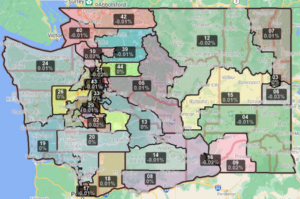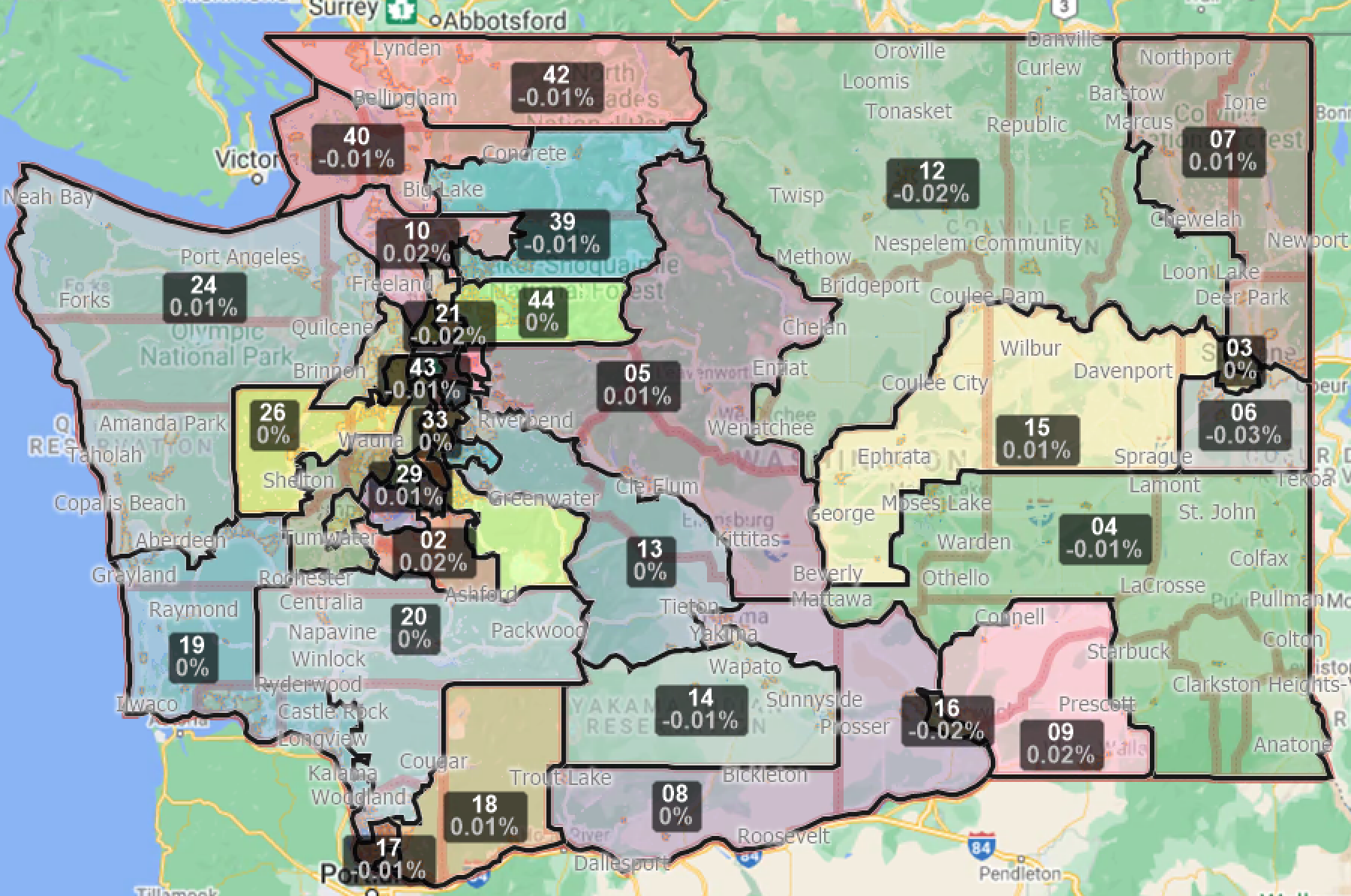Author: Andrew Hong
Redistricting Principle(s) Prioritized: Max Competition
Date: Jan 17, 2022
Washington State has 49 state legislative districts that are redrawn every 10 years following the release of the decennial U.S. Census results. Washington’s state legislative districts are used to elect both state senators and representatives—both upper and lower chambers use the same state legislative district maps, where each district elects 1 senator and 2 representatives.
This plan follows all of the federal and state legal requirements of a state legislative redistricting plan (described in Part 1 below), but has an emphasized guiding principle on encouraging electoral competition. I am defining encouraging electoral competition as maximizing the number of districts where there is roughly equal (<10% difference) composition of Republican and Democratic voters based on recent election results. There are different interpretations of what is “electoral competition” (for example Democratic Party insiders argue this also means competition between moderate and progressive Democrats, not just competition between Democrats and Republicans in hopes to minimize “purple” districts in a blue-leaning state), but I have chosen this definition because Washington State’s government functions as a rigid 2-party system with very little third party influence.
In this plan, I used 2020 presidential general election data to measure partisanship. However the 2020 presidential election in Washington State skewed towards Democrats compared to the typical statewide partisan performance for local state legislative races—Republicans perform better in local elections than in national elections in Washington. So I adjusted the 2020 presidential data by adding 3% to the Republican statistic (and removing 3% from the Democratic statistic for a net +6% Republican shift) per district to better reflect the partisan composition of Washington state legislative races. I chose a net +6% Republican shift because that is the difference between Biden’s net win in 2020 and Democratic Governor Jay Inslee’s net win in his 2020 gubernatorial re-election bid. This is an imperfect measure, but it’s the best I could do given the partisan data I have. However, to compare plans, I used Planscore’s partisan analysis to contrast the number of swing districts between my plans and the official 2021 and 2011 redistricting plans because that made possible a common standard of partisan comparison between all 4 plans.
There are some drawbacks to this plan. One being that in order to increase electoral competition, more political subdivisions and communities of interest would need to be divided. Political subdivisions, and especially communities of interest tend to have similar partisan leanings, so in order to not pack too much of one party’s voters into a district, I may have split that community of interest in order to create more evenly-partisan-split districts. Compactness may have also been hindered in my attempt to draw more competitive districts.
However, the benefit to encouraging electoral competition and increasing the number of swing districts is you create a state legislature that has more responsive elected officials to their constituents. Less elected officials will take their re-election for granted with less “safe” districts, so more legislators will prioritize responding to constituents and delivering policy wins for their district in order to secure a re-election. This effect creates a more constituent-oriented, responsive government.

